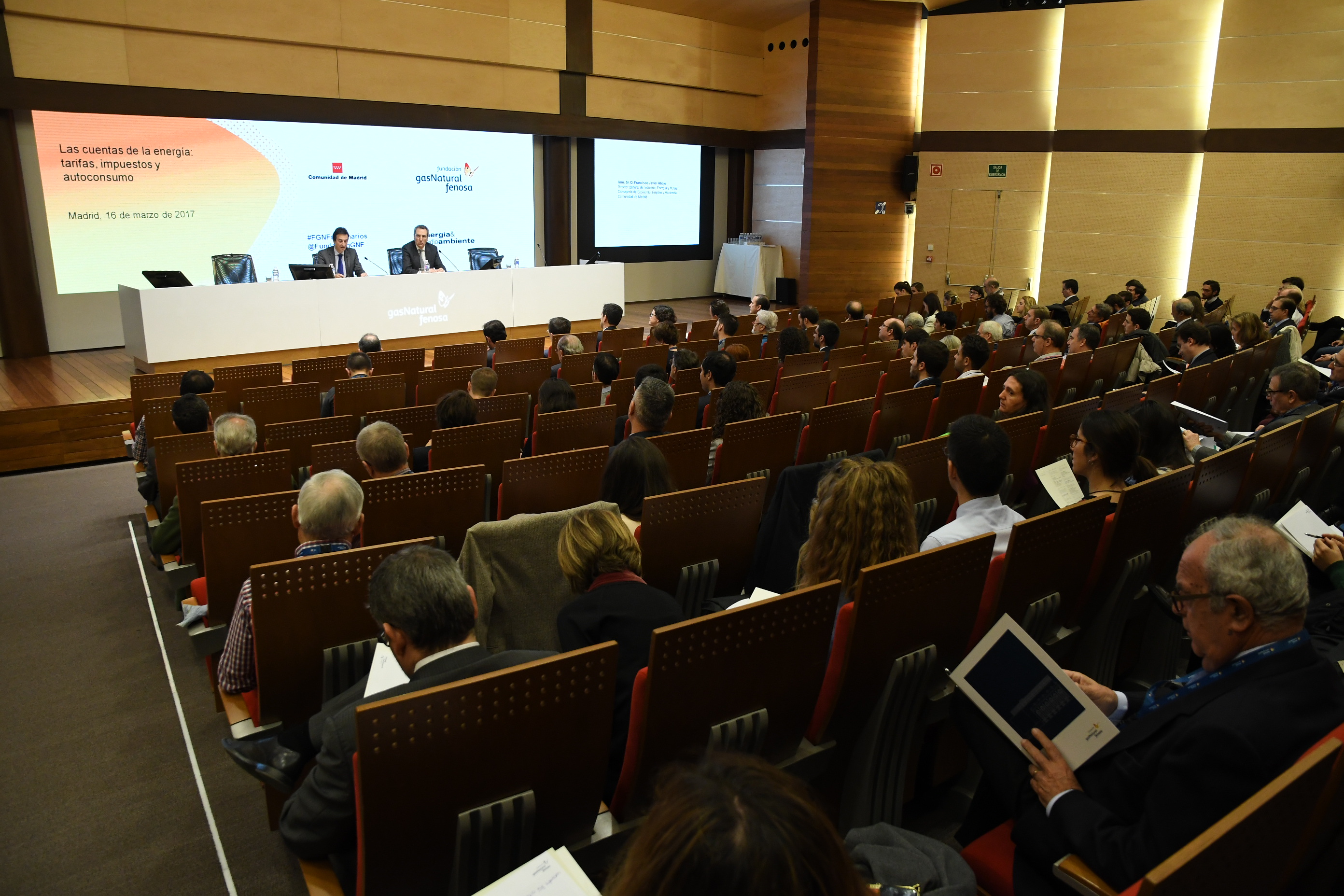Taxes and parafiscal charges comprise more than half of the electricity tariff, making it one of the most expensive in Europe
During a session organised by the Gas Natural Fenosa Foundation, in partnership with the Council of Economy, Employment and Finance of the Community of Madrid, various experts discussed solutions to lower the price of energy.
The natural gas tariff in Spain is nearly 10% more expensive than the European average due to the impact of the cost of transport networks and lower customer consumption due to the climate.

Today the Director General for Industry, Energy and Mining of the Community of Madrid, Francisco Javier Abajo, and the general manager of the Gas Natural Fenosa Foundation, Martí Solà, inaugurated the seminar ‘Energy bills: tariffs, taxes and self-consumption’, which was attended by over 200 professionals. During the session, experts described in detail the structure of the electricity and natural gas tariffs, changes in costs, and the role of taxes and public fees, as well as their importance in the debate on the decentralised self-consumption of electricity with photovoltaic solar energy and its contribution to the public deficit in Spain.
According to Martí Solà, the Director of the Gas Natural Fenosa Foundation, “energy bills are becoming a very topical subject in Spain and the surrounding countries. This is due both to the increase in energy prices in our country, and its impact on the international competitiveness of our companies and the well-being of our families.”
The Senior Manager of Strategy at PwC, Gerardo Fernández, explained that “electricity bills in Spain are some of the most expensive in Europe, which translates into lower disposable income for homes and companies.” This expert explained the different items that comprise the electricity tariff, showing that the part directly related to sales is only 26% of the total cost of the bill, while the costs related to energy and social policies (parafiscal charges), in addition to the taxes on the electric bill (fiscal charges) are around 50% of the entire electricity bill.
A partner at Accenture Strategy, Álvaro Polo, explained the composition of the natural gas tariffs, where the energy cost is only about 40% of the total. “Free market offers are generally more competitive in terms of price than the Last Resort Plan, according to price comparisons,” he remarked. Furthermore, this expert underlined that the Spanish domestic natural gas tariff is still nearly 10% more expensive than the European average. “This is related to the low level of gasification in Spain, population dispersion, and a more moderate climate which limits consumption, which means the cost of infrastructure has a greater impact,” he added.
The managing director of NERA Economic Consulting, Óscar Arnedillo, explained that the increase in electricity bills has led consumers to install self-consumption equipment when in reality the cost of the supply from the electricity network is lower than the cost of said equipment. “It is urgent that we remove charges that are unrelated to supplying electricity from the tariffs, as the longer this takes, the more consumers will have wasted their money by investing in self-consumption equipment,” he stated.
According to Arnedillo, self-consumption is not only inefficient, but it also hides transfers of costs from those who install self-consumption to the rest of consumers. “Therefore, when self-consumption begins to develop, regulators will have no choice but to remove these taxes and parafiscal charges, so that the cost of receiving the supply from the network will once again become the most affordable option for consumers,” he said.
The general manager of the Spanish Association of Manufacturers of Pulp, Paper and Cardboard (Aspapel), Carlos Reinoso, explained that energy is a determining element of industrial competitiveness, as it conditions the ability to compete in the domestic and exportation markets. As he argued, “it is absolutely necessary that energy policy accepts providing competitiveness to our industry as one of its fundamental pillars, which will require a dedicated commitment to competitive markets, tolls, and fixed costs and a decrease in energy tax pressure.”
As Juan José Lavilla, an attorney at Clifford Chance and professor at the University of Comillas, explained, parafiscal charges in the power sector often have a purpose other than covering the cost of supplying electricity, and a large part of the taxes are used simply to increase tax revenue. Additionally, several Autonomous Regions have created taxes on electricity with a supposedly non-tax purpose, often environmental.
The deputy director of Economic-Financial Regulation and Regulated Prices of the CNMC, Ismael Bahillo, explained that the costs of access in the electricity system tripled between 2005 and 2013, which led to a situation of structural deficit. After the comprehensive reform of the Spanish electricity system, in recent years there have been surpluses in the system. As he explained, it is also forecast that 2016 will end with a surplus and that from 2017-2022 the different financial years will be balanced at their close and with slight surpluses at the end of the period.
Share